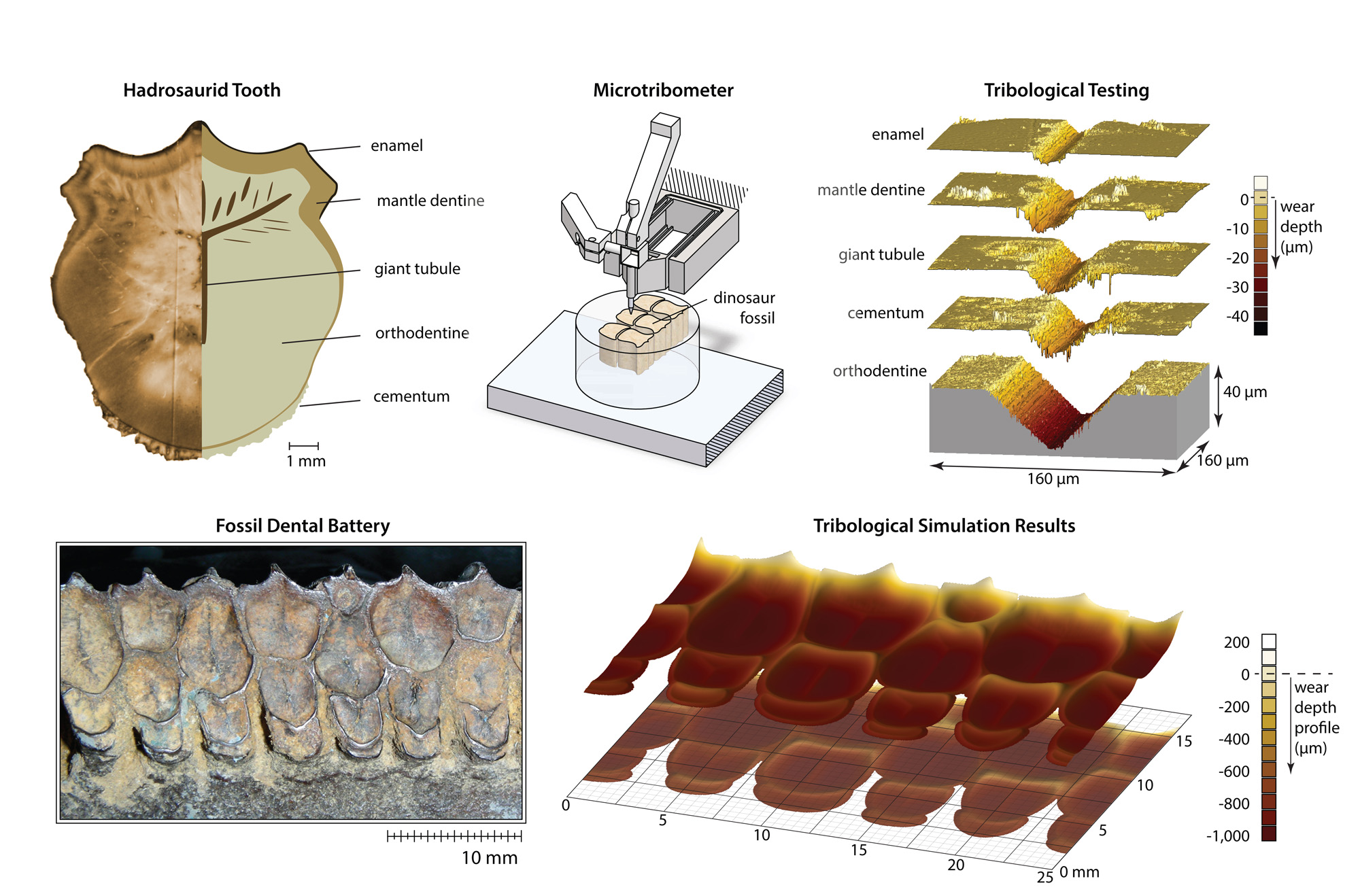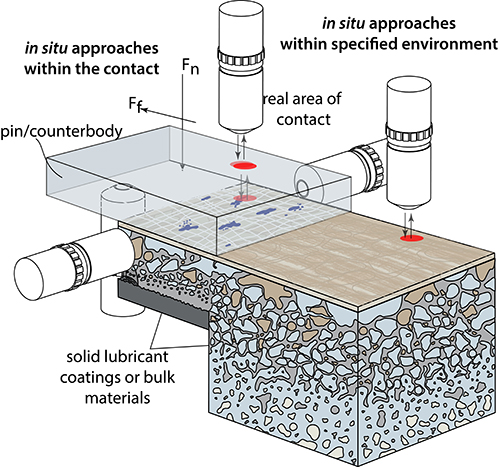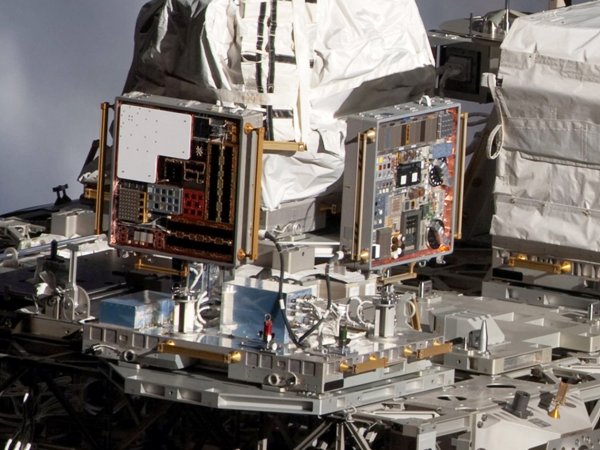Lehigh University
The Tribology Laboratory at Lehigh University
Research
Materials Tribology
Fundamental Origins of Friction and Wear
The interfacial interactions studied in tribology were the focus of many of the most prominent scientists throughout history, including Da Vinci, Amontons, Coulomb, Hertz, Reynolds, Hooke, Euler, and Stribeck as well as the more recent pioneers of tribology including Archard, Bowden and Tabor, who revolutionized this field by developing the fundamental and experimental basis for studies of friction and wear of materials. Their numerous experiments led to discoveries and observations; however, due to the complex nature of interfacial interactions, would often add as many new questions as answers. Today, there is an opportunity to revisit these fundamental interactions with a rich suite of modern analytical tools including electron microscopy, atomic force microscopy, and numerous chemical spectroscopy techniques as well as computing power. Modern techniques offer the ability to better understand these interfacial phenomena and possibly link molecular structure and interactions with the physical behavior of materials.
Wear is a complex process that occurs when two surfaces are slid against one another, resulting in gradual removal of one or both materials. The simple fact of wear is that it appears unavoidable, altering performance of mechanical and biological systems and ultimately resulting in system failure. Friction is equally if not more perplexing than wear. A fundamental understanding of the mechanisms of friction and wear has been elusive, largely due to the complex, dynamic and transient nature of tribological systems. In an effort to explain these interfacial interactions, our research is aimed to perform fundamental studies of wear and friction on a variety of materials, including single crystalline ionic solids and metals, lamellar solids, high performance carbon materials such as diamond and diamond-like materials, polymers, elastomers, hydrogels and even biological tissues. The objective of this research is to link multi-scale material order, organization and orientation to friction, wear and adhesion of solids.
Here, I will focus on three examples of our research:
- Fundamental Studies: Wear of Ionic Solids – Order and Orientation
- Material organization: Coupled Evolution of Wear and Contact Mechanics in multicomponent composite systems
- Surface functionalization – Ultra-low Friction Hydrogel Materials
1. Fundamental Studies: Wear of Ionic Solids – Order and Orientation
Wear rates of ionic solids naturally span many orders of magnitude, making ionic solids ideal candidates for fundamental studies of wear. I propose to link macroscopic and atomistic wear of ionic solids with material crystalline structure through experimentation, simulation and modeling. Preliminary work directly resulted in a simplistic model that links wear of ionic solids to their crystalline structure, orientation and ionic charge. This preliminary research suggests a link between sliding direction (relative to the crystalline orientation) and wear rate of the material.
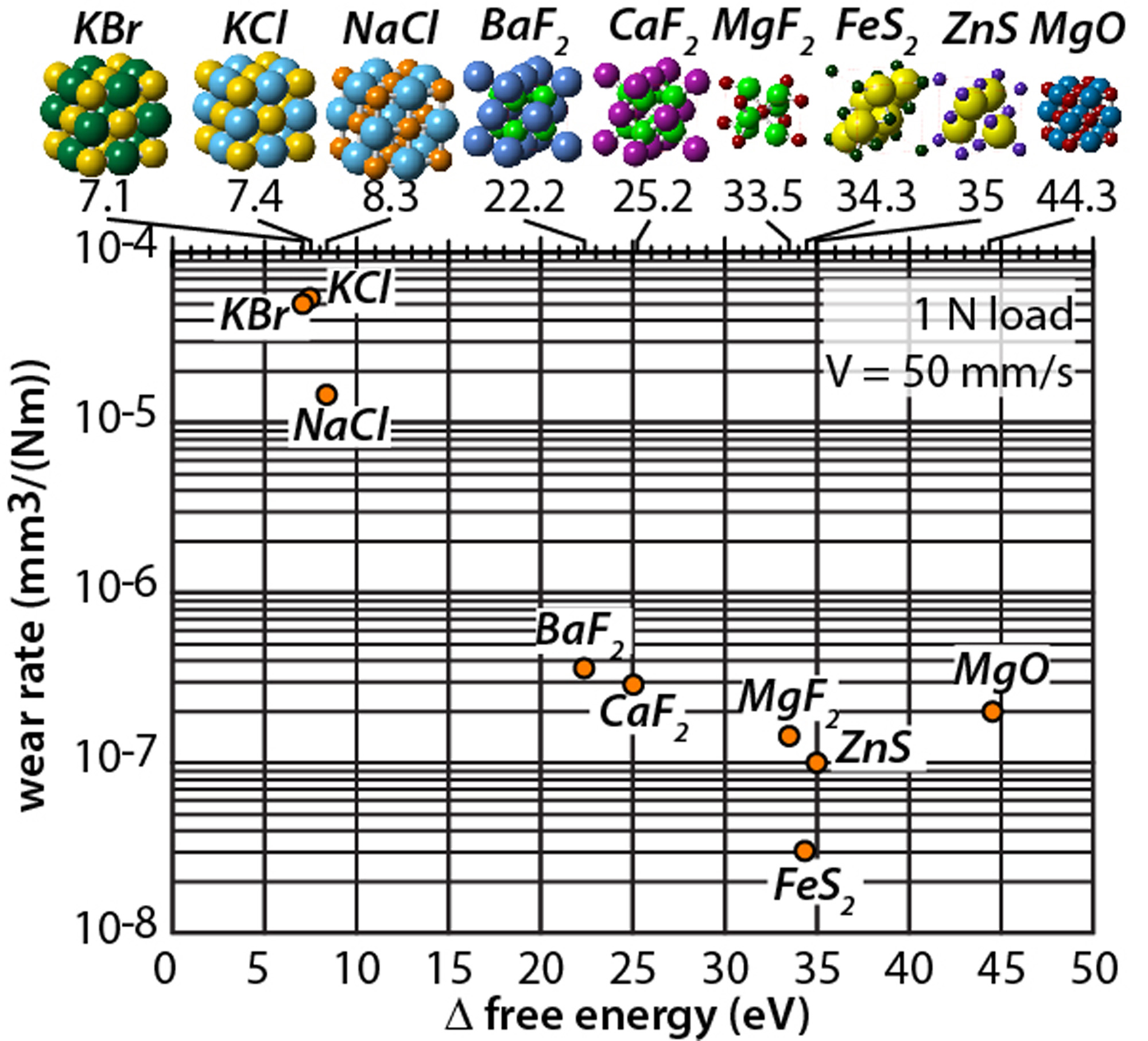
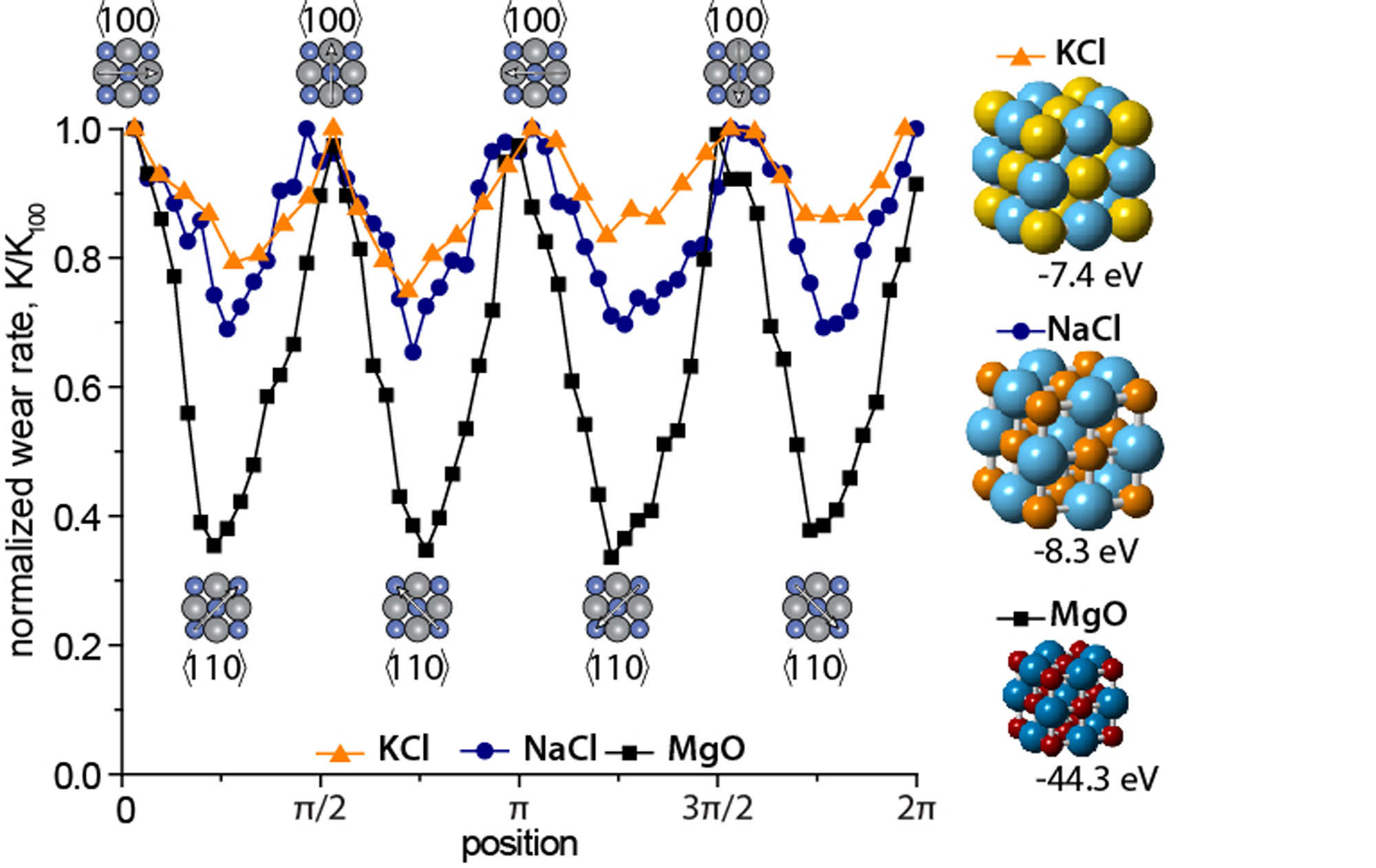
Simple atomistic calculations of the wear of a charge balanced NaCl pair reveals directional enrgy bariers to wear of ionic solids.
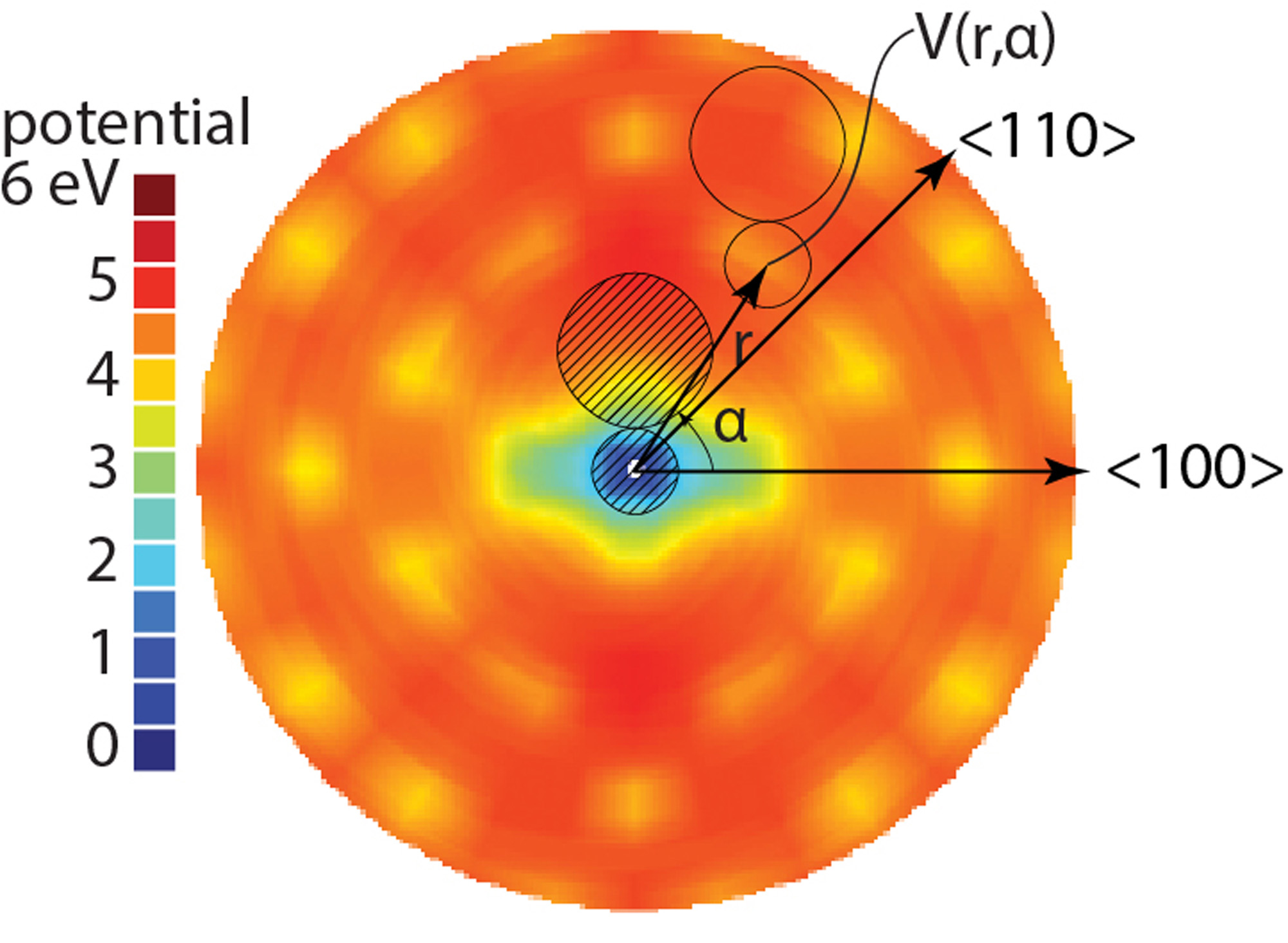
2. Material organization: Coupled Evolution of Wear and Contact Mechanics in multicomponent composite systems
Wear of composite systems is often much more complicated than simple rules of mixture. One example is in chemical mechanical polishing (CMP) where a considerable amount of “dishing” is observed when a system of dis-similar wear rates is polished. A two parameter elastic foundation model purposed by Sawyer and based on the pressure-displacement relationship given by Eq. 1, was used to incorporate the combined effects of gross pad deflection and curvature on the foundation reaction pressure in three dimensions [1]. Here![]() is the foundation reaction pressure,
is the foundation reaction pressure, ![]() is the deflection of the foundation,
is the deflection of the foundation, ![]() is the first foundation parameter, and
is the first foundation parameter, and ![]() is the second foundation parameter. The deflection of the pad under a uniform applied pressure,
is the second foundation parameter. The deflection of the pad under a uniform applied pressure, ![]() , is given by Eq. 2..
, is given by Eq. 2..
Equation 1: ![]()
Equation 2: ![]()
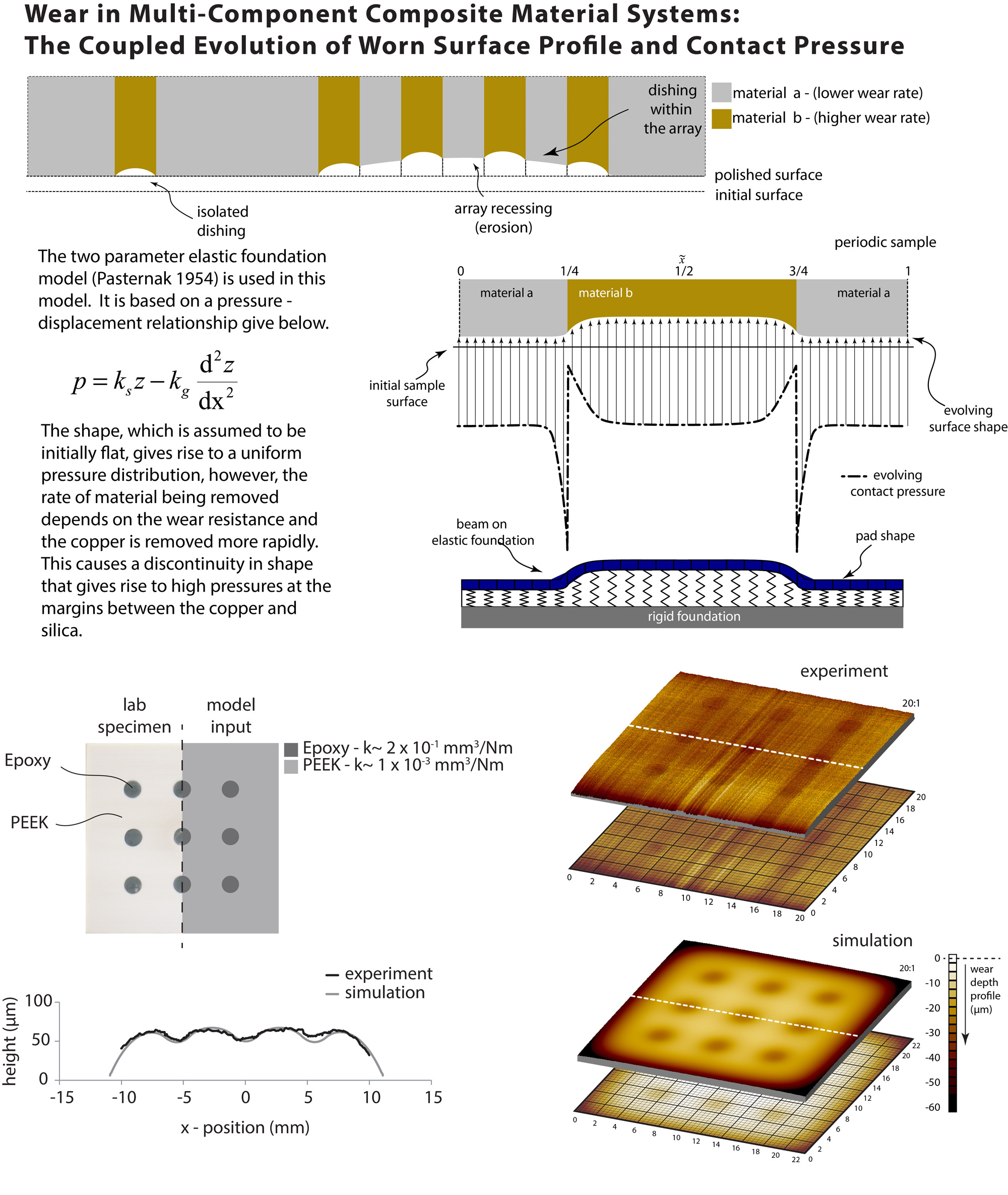
When dealing with planar surfaces the gross pad deflection is well estimated by the Winkler foundation model but because the Winkler model assumes there is no coupling between neighboring elements of the pad, the second term, which is akin to a beam lying on a bed of springs, is carried through the analysis to recover surface curvature. The Winkler model alone would either over or under predict contact pressures depending on the curvature direction. By incorporating both terms in the analysis it is possible to predict the evolution from planar to non-planar surface geometries using basic mechanics. Although Eq. 1 is for two dimensional wear it is easily adapted to the third dimension by accounting for pad curvature in the y-direction as well as the x-direction.
The iterative solution procedure, previously outlined by Sawyer [1], uses a numerical approach where each surface element is assigned a specific wear resistance. Although in this investigation material wear rates were assumed constant the iterative nature of the solution can accommodate time, velocity, or pressure dependent wear rates. The cumulative depth of wear after N simulation steps is computed by summing all of the incremental wear depths.
An example of this model’s utility can be seen in its application to the abrasive wear of the complex dental battery of the hadrosaurid; a gregarious herbivore from the Late Cretaceous period [2]. In this example, we measured nanomechanical and tribological properties on hadrosaurid (duck-billed dinosaur) dental fossils from the American Museum of Natural History. Using custom instruments, we measured tissue hardness and wear rates that were preserved in the 65 million year old tooth. These properties are preserved in fossilized teeth because apatite mineral content is the major determinant of dental tissue hardness.
Measured tissue wear rates were used to simulate the formation of hadrosaurid tooth chewing surfaces using a 3-D wear simulation. The simulation results in a surface profile nearly identical to a naturally worn hadrosaurid dental battery. The model revealed how each tissue (of differing wear rates) contributed to the formation of sophisticated slicing and grinding features in these reptiles tens of millions of years before mammals evolved analogous chewing capacity. This capacity to measure wear-relevant properties preserved in fossils provides a new route to study biomechanics throughout evolution. See Journal paper: Science, October 5, 2012, pp.98-101.
1. Sawyer, W.G., Surface Shape and Contact Pressure Evolution in Two Component Surfaces: Application to Copper Chemical Mechanical Polishing. Tribology Letters, 2004. 17(2): p. 139-145.
2. Erickson, G.M., et al., Complex Dental Structure and Wear Biomechanics in Hadrosaurid Dinosaurs. Science, 2012. 338(6103): p. 98-101.
3. Surface functionalization – Ultra-low Friction Hydrogel Materials
Surface functionalization is another way to alter a system’s tribological properties. A recent example of this is the use of surface brushes and gels to improve lubricity of a hydrogel material. Hydrogel polymer networks can be developed to contain from less than 20% to more than 90% water for a wide variety of hydration states and mechanical properties. Hydrogels can be tuned to behave as solids, liquids or anywhere in between and can be used in joint implants, heart valves, drug delivery and other biomedical applications. The water content of a hydrogel directly impacts its mechanical properties due to the poroelastic nature of hydrogel polymer networks. Lubricity, which has been shown to directly correlate to comfort in contact lenses1, can be dramatically altered by tuning the surface water content of hydrogel polymer networks. By functionalizing the surface of hydrogels, we can tune the friction coefficient and other interfacial properties of the hydrogel. These techniques are used to create gradient functionalized surfaces approaching complexities in real biological systems and tissues.
Example:
Polyhydroxyethylmethacrylate (pHEMA) hydrogels were molded into flat rectangular prisms with dimensions of 75 x 25 x 4 mm; gels were crosslinked with N,N'-Methylenebisacrylamide (MBAm) 0.025%, activated in ~ 30 minutes by ammonium persulfate (APS) and tetramethylethylenediamine (TEMED). One 75 x 25 mm face was treated by wetting it with a 50% TEMED solution. Once treated, gradient brushes of polyacrylamide were grown from the surface of the pHEMA using a computer controlled servo motor stage to perform controlled dip of the hydrogel into an acrylamide solution. The TEMED at the surface of the pHEMA hydrogel activates the polymerization of the acrylamide, which attach to the surface of the pHEMA hydrogel. By controlling the speed of the dip, a gradient polyacrylamide brush is applied to the surface of the pHEMA.
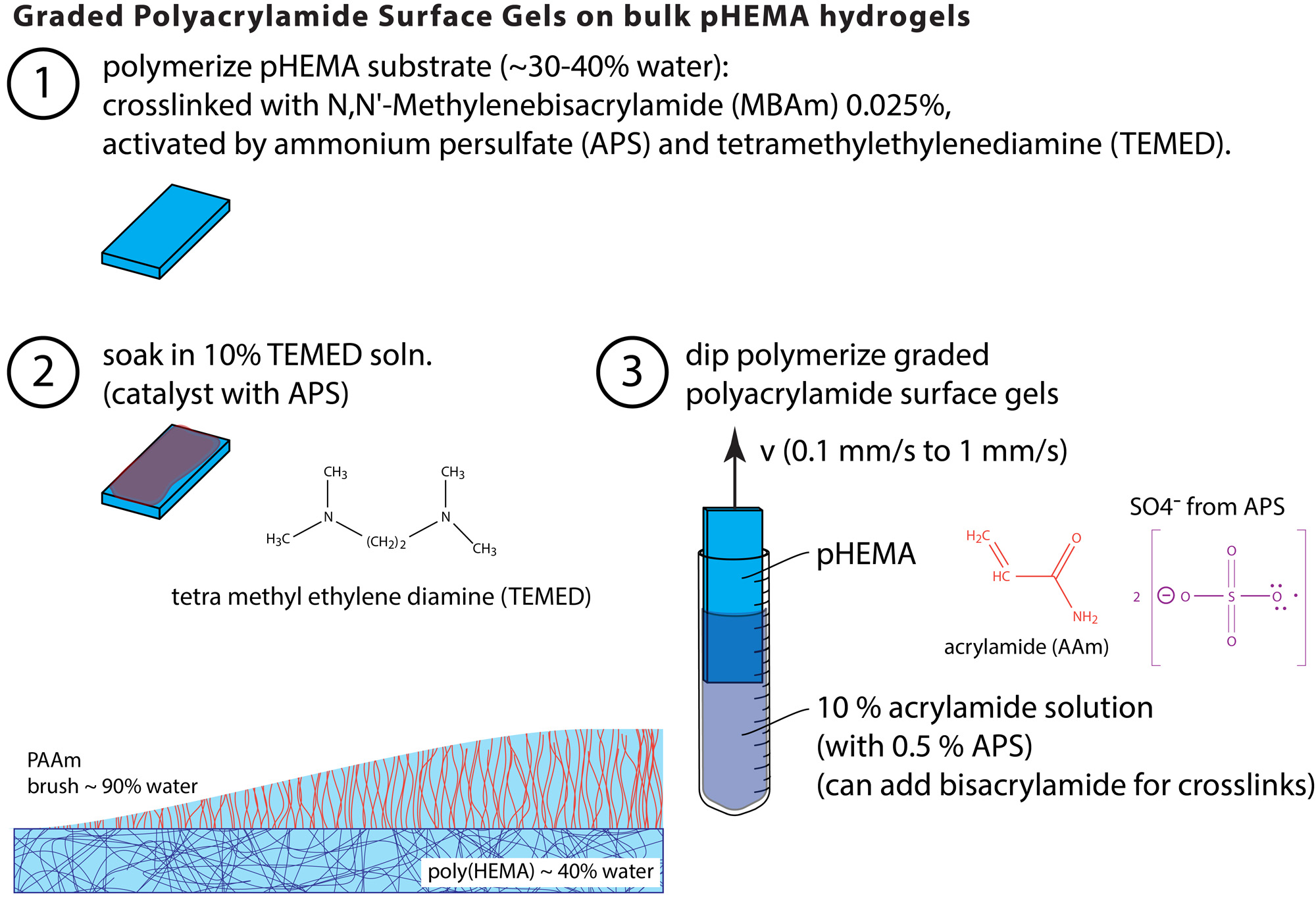
Friction coefficient was measured using a custom microtribometer to evaluate lubricity of the material as a function of surface position (i.e. brush length). Externally applied normal loads ranging from 100 to 10,000 µN and a sliding velocity of 200 µm/s. Friction coefficients are calculated as the ratio of the measured tangential force (friction force) and the externally applied normal force. Friction coefficients and standard deviations are reported for each experiment.
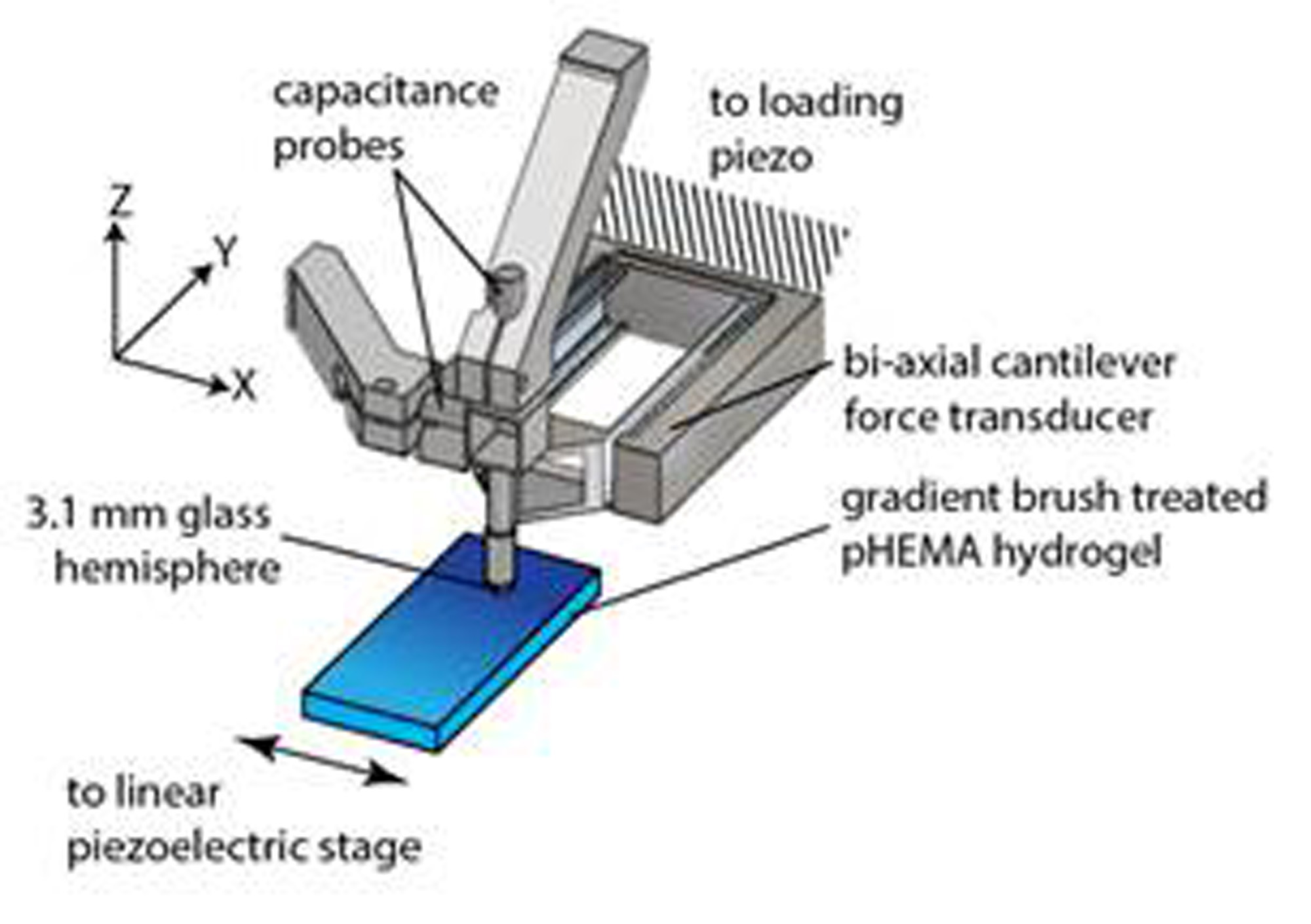
Polyacrylamide brushes dramatically affect the lubricity of the hydrogel surface. Friction coefficient was measured as a function of position down the coating dip-axis to confirm the presence of a gradient surface layer. It was shown that friction coefficient decreased with increasing acrylamide exposure during the dip process. Friction coefficient varied from as low 0.0047 as 0.3. Furthermore, the friction coefficient initially decreased with increasing normal force for all sample locations until~ 2.5 mN. It is hypothesized that the polyacrylamides affinity for water allows for fluid support of the normal load at the interface, dramatically reducing the interaction between the polymer and the glass probe. By using a high precision dip coating method, gradient surface functionalization is achieved to create complex surface properties.
